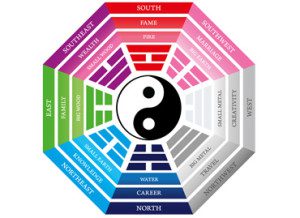From promoting tranquillity to boosting energy levels, each colour in the Feng Shui spectrum holds its own unique significance and power. By understanding the symbolism behind each shade and learning how to strategically incorporate them into your home or workspace, you can harness the energy of colour to create a harmonious and supportive environment. Whether you’re looking to revitalize a stagnant space, enhance your creativity, or attract abundance into your life, the key lies in unlocking the power of colour and harnessing its potential for positive change.
At the core of Feng Shui colour theory is the belief that each colour is associated with specific elements, emotions, and energies. By understanding the meanings behind each colour, we can harness their power to create a space that supports us in achieving our goals and living a balanced life. Let’s start with some of the most common Feng Shui colours and their meanings:
– Red: Symbolizing passion, energy, and vitality, red is a powerful colour that can stimulate activity and creativity. It is often used to promote feelings of excitement and motivation, making it a great choice for spaces where you want to feel energized and inspired.
– Blue: Representing calmness, serenity, and peace, blue is a soothing colour that can promote relaxation and mental clarity. It is ideal for bedrooms and meditation spaces, where you want to create a sense of tranquility and harmony.
– Yellow: Associated with joy, optimism, and happiness, yellow is a cheerful colour that can uplift our spirits and promote a positive mindset. It is often used in kitchens and dining areas to stimulate appetite and encourage socializing.
– Green: Symbolizing growth, renewal, and balance, green is a harmonious colour that can promote healing and relaxation. It is ideal for spaces where you want to feel connected to nature and promote a sense of wellbeing.
– White: Representing purity, innocence, and clarity, white is a clean and refreshing colour that can promote a sense of cleanliness and renewal. It is often used in bathrooms and meditation spaces to create a sense of calm and purity.
By incorporating these colours into your home or workspace, you can create a harmonious environment that supports your overall wellbeing. However, it’s important to remember that individual preferences and cultural associations can also play a role in how we perceive colours. In addition to the meanings behind individual colours, Feng Shui also considers the interaction of colours within a space. The balance of yin (cool) and yang (warm) colours, as well as the harmony of the five elements (wood, fire, earth, metal, water), is crucial in creating a space that feels balanced and energizing.
Whether you’re looking to enhance your productivity, boost your creativity, or simply create a more peaceful environment, understanding the basics of Feng Shui colour theory can help you unlock the power of colour and harness its potential to improve your overall wellbeing. So why not experiment with different colours and see how they can positively impact your living or working space?
UPDATED: April 29th, 2024.

